“A mentally ill woman who died after a stun gun was used on her at the Fairfax County jail in February was restrained with handcuffs behind her back, leg shackles and a mask when a sheriff’s deputy shocked her four times, incident reports obtained by The Washington Post show.”
This woman was Natasha McKenna, – 37, who was diagnosed as schizophrenic aged 12- a petite mother of a young child. Any explanation as to why it was acceptable to use a 50,000-volt Taser four times on a woman whose hands are handcuffed behind her back, legs restrained, with a mask on is completely bogus.
Natasha McKenna initially cooperated with deputies, placed her hands through her cell door food slot and agreed to be handcuffed, the reports show. But McKenna, whose deteriorating mental state had caused Fairfax to seek help for her, then began trying to fight her way out of the cuffs, repeatedly screaming, “You promised you wouldn’t hurt me!” the reports show.
Numerous experts said the use of a stun gun on a fully restrained prisoner was an unreasonable use of force, particularly in a jail setting where a person is unlikely to flee. They also said Tasers are not recommended for use on the mentally ill, that even the Taser manufacturer warns against using them on people in a state of “excited delirium,” and that using a stun gun more than three times is thought to be above the threshold for use on a single person.
“She wasn’t a threat; she wasn’t going anywhere; she was restrained,” said Richard Lichten, a use-of-force expert and former jail official in Los Angeles. “It feels excessive, unnecessary and out of policy, based on what you’re telling me.”
The account comes from dozens of pages of sheriff’s deputy incident reports that provide the first complete account of the events leading to the death of the Alexandria mother that has troubled her family and local mental health advocates.
A restraint chair in the Fairfax County jail, similar to one used to hold Natasha McKenna after deputies shocked her four times with a Taser on Feb. 3, 2015. She later died and police are investigating. (Tom Jackman/The Washington Post)
The truth is, though, that police have been covering up the real details on Natasha’s death for months. Furthermore, multiple sources told NBC that police detectives were denied access to the Fairfax County jail for their investigation into her death. Only after two months of pressure was it revealed that Natasha McKenna was as physically restrained as a human being could possibly be when she was tasered over and over and over and over again.
Even after all of this, police are not quite clear on why Natasha McKenna was even jailed in the first place. On the day she was arrested, she had actually called the police herself to report being assaulted and appeared to be struggling mightily with mental illness before she bounced around between hospitals and jails for days.
As a nation, we have clearly set ourselves up for failure with mental health. In need of compassionate care, Natasha McKenna instead received violent brutality.
Facing six deputies, how big was Natasha McKenna?
Natasha McKenna upon her graduation from W.T. Woodson High School in Fairfax. (Family photo) How big, physically, was Natasha McKenna? We have reported at various times that she was 5 feet 3 inches tall and weighed 130 pounds. But in the deputies’ reports, several of those involved in trying to restrain her noted that she was so thin a standard “restraint belt” could not be used to immobilize her hands. “It was discovered that Inmate McKenna was physically too small in the torso for the belt to take effect,” one deputy wrote. “She could easily, with her hands restrained to the belt, maneuver the belt up to her chest and therefore be able to attack with her hands.”
So the deputies had to take the belt off of her, and then cuff her behind her back. They then attached those handcuffs to one end of the ripp hobble, with the other end attached to the leg shackles. Removing the belt prolonged the process of getting McKenna controlled, and preceded the first of the four Taser jolts.
An autopsy report should show what McKenna’s height and weight were when she died, though she spent five days on life support at Inova Fairfax Hospital after her heart stopped beating in the jail on Feb. 3. She was removed from life support and died on Feb. 8. She was 37. No cause of death has yet been released.
Fairfax homicide detectives turned away from jail
After McKenna was rushed to the hospital on Feb. 3, someone called the Fairfax County police. Four law enforcement officials familiar with the case said that homicide detectives then went to the jail and were refused access, because McKenna was still alive. But the reports show that two Fairfax homicide detectives and a crime scene detective then went to the Inova Fairfax Hospital and conducted interviews there.
Sheriff Stacey Kincaid declined to discuss the specifics of McKenna’s case, but did say, “If we have a medical emergency, we call 911. If we have a person who has died, we call the police.” The sheriff’s office did call the police on Feb. 5, the officials said, when it became apparent that McKenna would not survive, and the police investigation began then.
Experts say Taser inappropriate for McKenna
We consulted a number of experts about the use of a Taser on a restrained prisoner, and four of them went on the record opposing such a practice. Ron Martinelli, a criminologist and former police officer from San Jose, said force is not usually the best tactic with mentally ill prisoners. He questioned why deputies did not back off once McKenna showed signs of resisting.
“You need to treat that prisoner like a patient, not a suspect,” Martinelli said. “She is already restrained, why don’t you let her calm down?”
Jail officials said they typically do not withdraw from a cell extraction once it has begun.
Todd Markley, a retired Arlington County officer who now instructs on use of force at the Northern Virginia Criminal Justice Academy, said, “We’re allowed to use force for two purposes: defense and control. Officers are allowed to branch that out as they see reasonable, and I don’t see that as reasonable, based on the facts you’ve given me.”
Charles Drago, the former Assistant Chief of Police in Ft. Lauderdale, provides consulting and expert witness services for both plaintiff and defense attorneys in a variety of police practices including use of force and Taser-related incidents. Drago noted that “Taser still warns police officers in their training and their warning bulletins. When you use a Taser on someone showing signs of excited delirium or or increased heart rate or increased perspiration, sometimes people end up dead.”
Drago also noted, “If you put too many of these charges together, the folks in the medical field say when you go above three (charges), you get into a gray area about whether it causes cardiac arrest or not. It’s all part of the analysis. That’s the problem with the Taser. It doesn’t have a mind of its own. Officers have to read the warning bulletins.”
McKenna’s previous scrapes with the jail deputies
McKenna had two prior incidents with deputies that were likely in the minds of both her and the deputies tasked with getting her out of her cell on the morning of Feb. 3. In the first, on Jan. 27, reports show that she had covered the window of her cell door with paper, then a blanket and a sheet. When a deputy pulled the blanket out of the cell through the food slot, with McKenna pulling on the other side, one of McKenna’s fingers was cut. “Look what you did to my finger,” the deputies wrote that she said, indicating her left index finger which had previously been amputated at the tip. But she later told the mental health staff that her finger was fine and that it was an old wound opening up again.
Four days later, on Jan. 31, McKenna reportedly placed her mattress in front her door, again blocking the window so deputies could not see inside. When the deputies opened the door to pull the mattress away from the window, “Inmate McKenna was able to get her entire body out of the door and began trying to scratch and bite us,” one deputy wrote. The deputies placed her on the floor but McKenna continued to fight, and so one deputy “struck Inmate McKenna in the face with his open left hand to stop her from trying to bite and scratch him.” When she struggled further, another deputy “delivered a strike to her chest area with the side of his right hand.” She was then placed into a restraint chair.
This may be why, on Feb. 3, after McKenna agreed to be placed in handcuffs for a trip to Alexandria, she began yelling, “You promised you wouldn’t hurt me!”
Source:What’s U Pic






























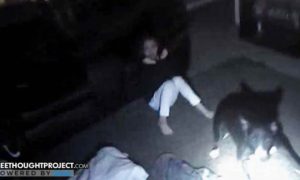







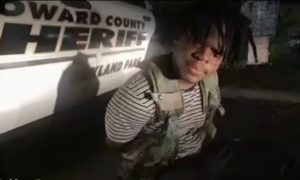











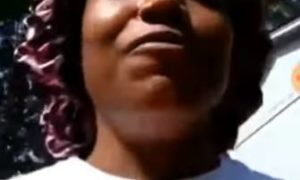





















































































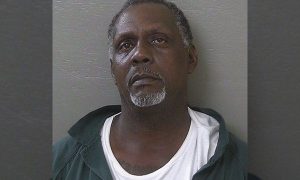









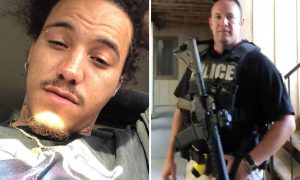







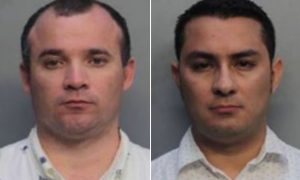























































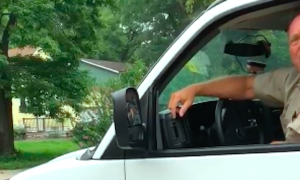





























![[Video] Chicago Police Officers Caught On Video Telling Two Black Men "We Kill Mother F**kers"](https://earhustle411.com/wp-content/uploads/2018/07/evil-cop-3-300x180.jpg)
![[Video] Chicago Police Officers Caught On Video Telling Two Black Men "We Kill Mother F**kers"](https://earhustle411.com/wp-content/uploads/2018/07/evil-cop-3-80x80.jpg)












![[Video] White Woman Calls The Cops On Black Real Estate Investor, Cops Threaten To Arrest Her For Harassing Him](https://earhustle411.com/wp-content/uploads/2018/05/nosy-neighbor-300x180.png)
![[Video] White Woman Calls The Cops On Black Real Estate Investor, Cops Threaten To Arrest Her For Harassing Him](https://earhustle411.com/wp-content/uploads/2018/05/nosy-neighbor-80x80.png)


![White Scientist Says The Black Community Is Being Targeted By The Medical System, They Are Deliberatly Being Poisoned [Video]](https://earhustle411.com/wp-content/uploads/2016/05/mike-adams-300x180.jpg)
![White Scientist Says The Black Community Is Being Targeted By The Medical System, They Are Deliberatly Being Poisoned [Video]](https://earhustle411.com/wp-content/uploads/2016/05/mike-adams-80x80.jpg)
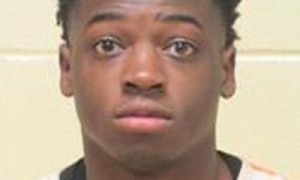







![Teenage Girl Shot In Her Stomach Three Times But Took Time To Post To Facebook [ Video]](https://earhustle411.com/wp-content/uploads/2016/02/Gangster-chick-300x180.jpg)
![Teenage Girl Shot In Her Stomach Three Times But Took Time To Post To Facebook [ Video]](https://earhustle411.com/wp-content/uploads/2016/02/Gangster-chick-80x80.jpg)







